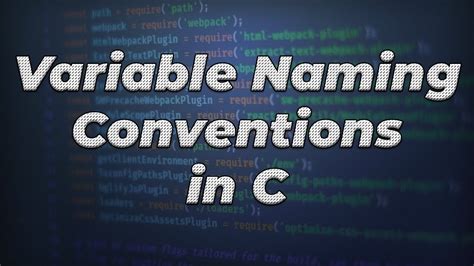Naming conventions in programming languages have always been a hot topic of debate among developers, with the dispute between CamelCase and underscores taking center stage in recent discussions. The choice between CamelCase and underscores often boils down to personal preference, readability, and convention adherence.
One user pointed out that using underscores can be physically uncomfortable to type, especially when compared to typing capital letters for CamelCase. While both have their own set of challenges, consistency and readability remain key factors in determining the best naming convention for a project. For instance, underscores provide consistency in visually distinguishing between separate elements within an expression.
On the other hand, proponents of CamelCase argue that it offers immediate visual recognition of individual elements in an expression, making it easier to parse at a glance. The debate extends to the efficiency of typing each style, with some users highlighting the ease of typing CamelCase on a US keyboard layout.
Additionally, the discussion touches on the impact of naming conventions on cross-language compatibility, making it essential to consider how variable names interact with functions, keywords, and syntax in diverse environments. The contrast between different programming paradigms and language specifications further complicates the naming convention dilemma.
User comments also shed light on the historical context of naming conventions in programming and their evolution over time. References to older languages like FORTRAN and ALGOL, as well as insights into the transition from eight-bit ASCII to Unicode, highlight the nuanced considerations that come into play when designing modern coding standards.
The conversation delves into the realm of coding aesthetics, exploring the role of whitespace, tabs, and punctuation in enhancing code legibility and maintainability. From suggestions for using non-breaking space characters to experimenting with new syntax styles like DromedaryCase or inverseCamelCase, developers continue to seek innovative solutions to the age-old debate.
Ultimately, the choice between CamelCase and underscores transcends mere syntax preferences; it reflects a deeper philosophical stance on the intersection of human readability, machine interpretation, and coding efficiency. As languages evolve and coding practices adapt, the quest for the ideal naming convention persists, driving developers to find a balance between tradition and innovation in an ever-changing technological landscape.
In conclusion, the naming convention debate in programming serves as a microcosm of the broader challenges faced by developers in balancing functionality, usability, and expressiveness in their code. By engaging in thoughtful discussions and exploring diverse viewpoints, the programming community continues to shape the future of coding standards and conventions for generations to come.


Leave a Reply